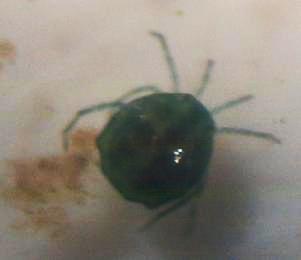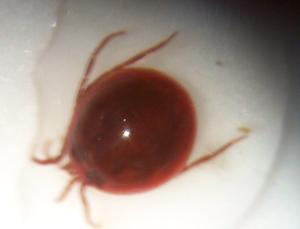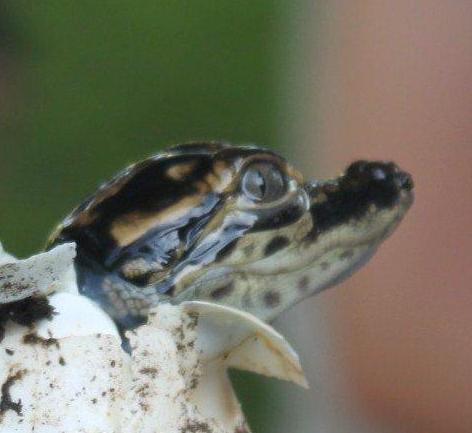|
Pond Life of Brazos Bend State Park
Arachnids
|
Arachnids
are spiders, and their close kin. They all have 8 legs, plus 2
long appendages around the head called pedipalps that are used by
the males in mating. The body is divided into 2 parts, the
abdomen, and the cephalothorax or combined head and chest. Very
few arachnids are aquatic. The most common aquatic arachnids are
fishing spiders (Dolomedes) and water mites (Hydracrina
or Hydrachnida).
|
|
The fishing spider, also called the raft spider or the nursery
web spider, is a large spider with very long legs. One prominent
identification mark is the light bands around the edges of the
abdomen and cephalothorax. They can get up to an inch long,
excluding legs.
Fishing spiders are not truly aquatic because they do not
actually live in the water. However they are frequently found
running over the surface of ponds, and can dive under the water to
hide or to catch prey.
They feed on aquatic insects and occasionally small fish or
tadpoles.
|
|

Fishing Spider (Dolomedes)
|
|

Green spotted water mite 0.6 mm long
|
|
Water mites are very tiny, one of the smallest creatures that
can be found with the naked eye in the pond. Without
magnification, they look like tiny black dots. They are usually
less than 1 mm in diameter. Their bodies are round, and the
cephalothorax is very small, so that even under magnification, it
is hard to distinguish it.
Water mites come in a variety of colors, black, blue, red, and
green, and sometimes spotted. The legs are small and the pedipalps
are large.
|
|
The picture at the right was taken under 100 X magnification.
The cephalothorax can be seen to be a separate part of the water
mite's body. Also visible are the long hairs on the water mite's
legs that aid in swimming.
Water mites are usually found on the bottoms of ponds. They are
predators, feeding on very small insect larvae and small
crustaceans. Early larval stages are parasites, attacking insect
larvae. Although water mite larva do not kill their hosts, female
insects that have been parasitized by them are less reproductive
than those who have not been. Thus water mites are important in
controlling the populations of insects, such as mosquitoes and
midges.
|
|

Water Mite 0.4 mm long
|
| |

Large red Water Mite 1.5 mm in diameter
|
|
|
Next
|
Crustaceans
|
Dobsonflies and Fishflies
|
Prev
|
Updated: Aug 12, 2011
|




